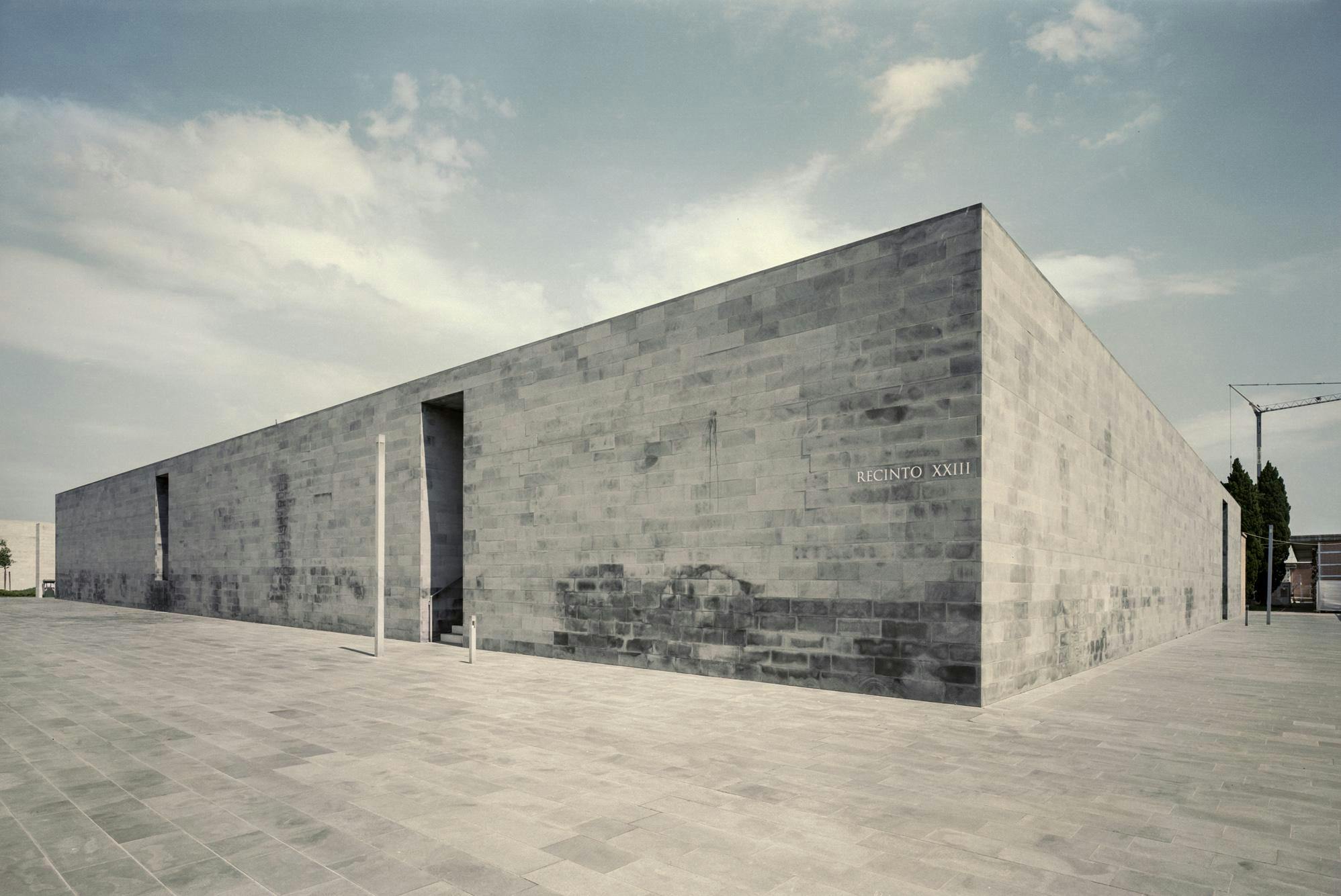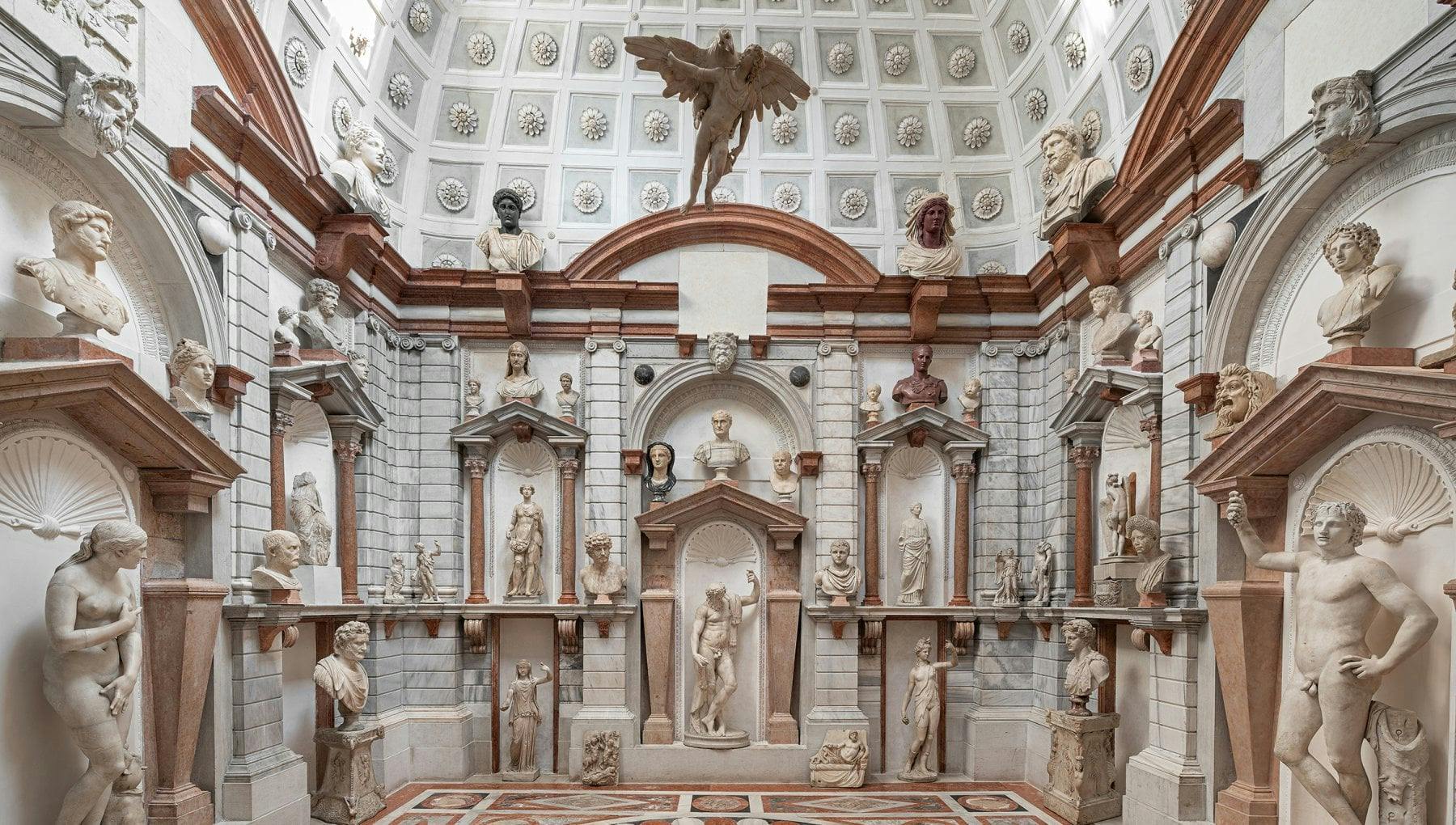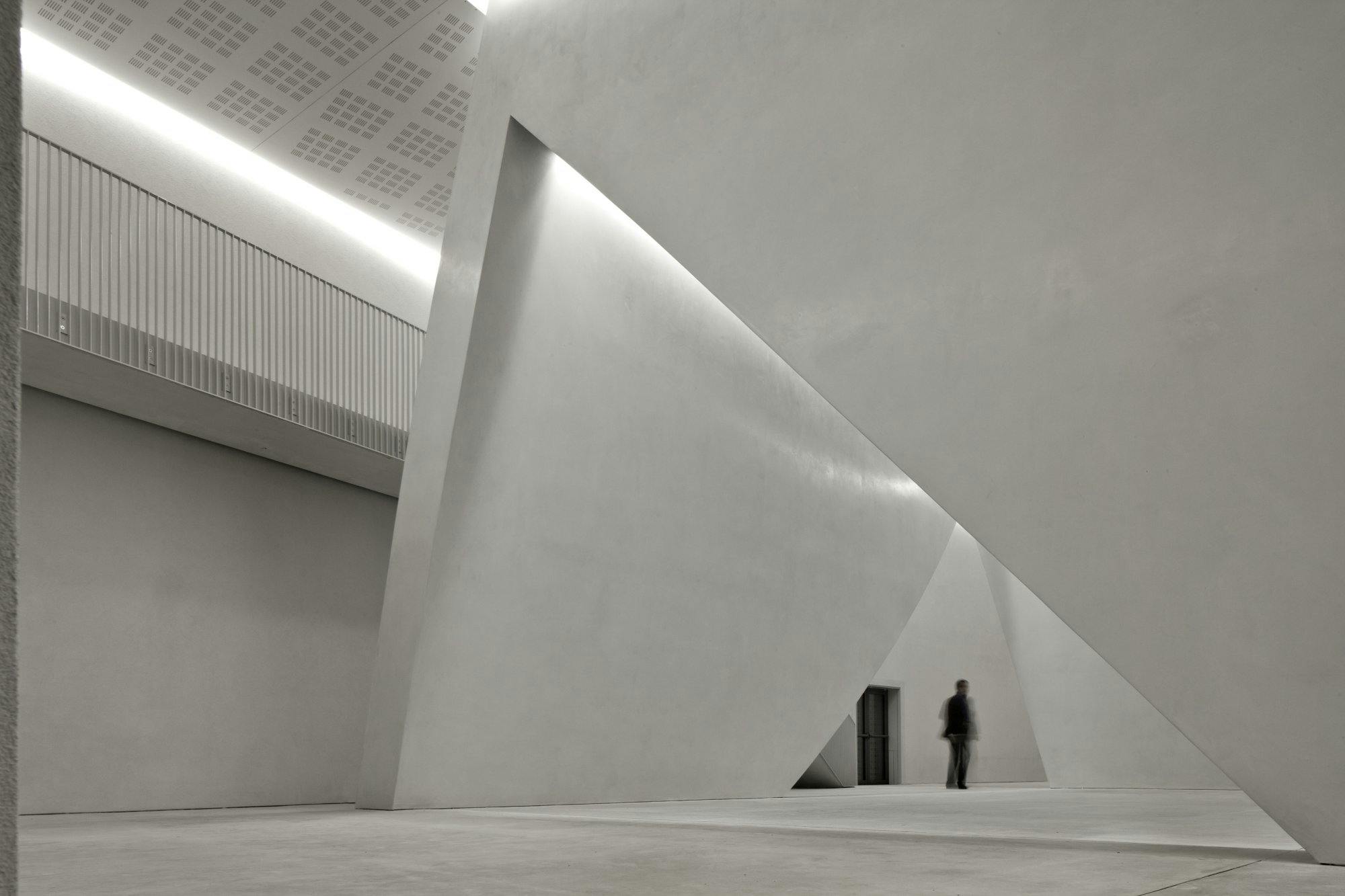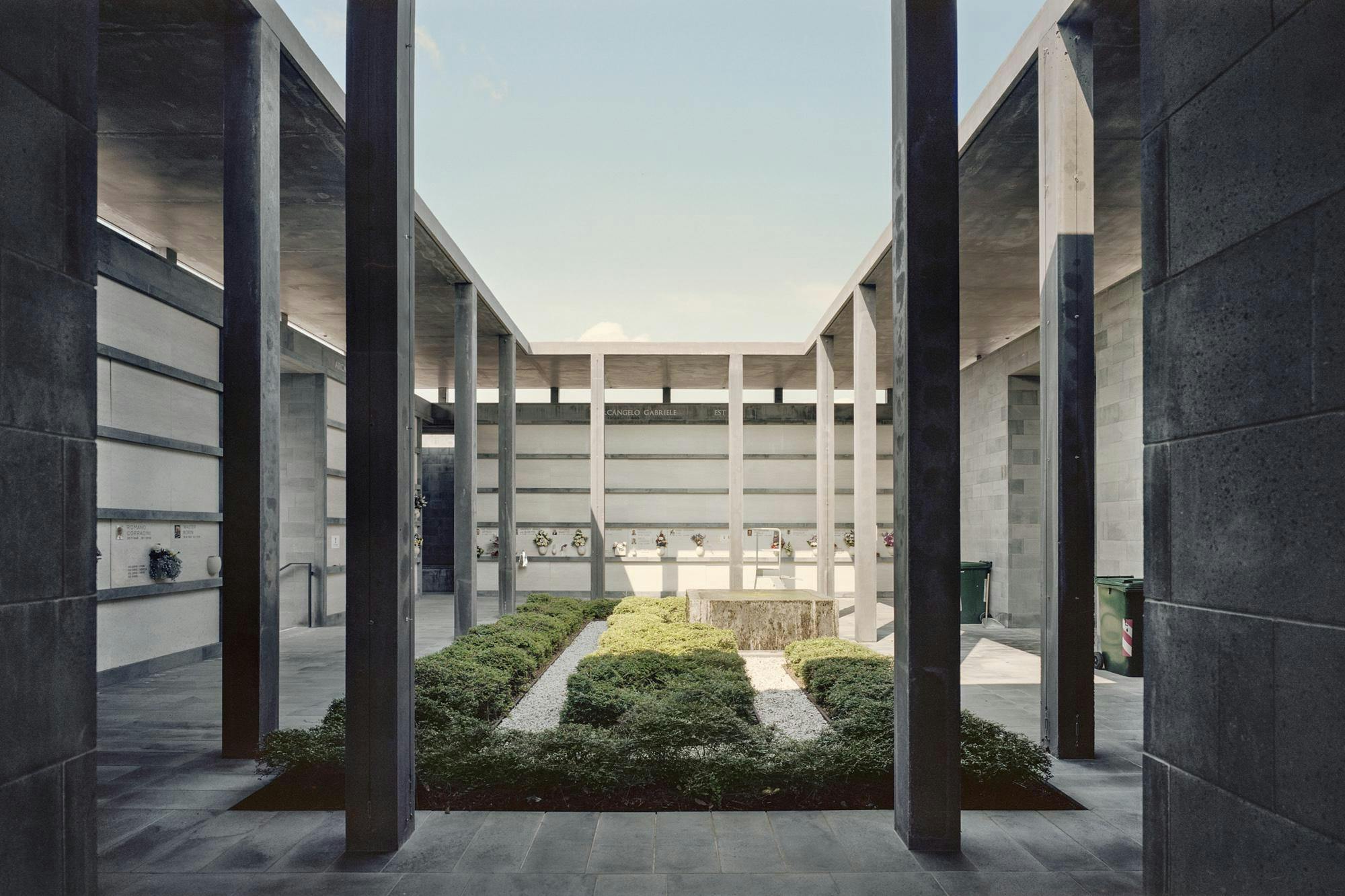
San Michele Cemetery
Designed by David Chipperfield, the San Michele Cemetery Extension in Venice was built in phases between 1998 and 2007
Located on the monastic island of San Michele between Venice and Murano, the cemetery extension by David Chipperfield is composed of a brick cloister and series of columbaria built in phases over nearly a decade. Commissioned to accommodate the city’s growing need for cremation plots, the project was designed to recede from view—both architecturally and symbolically—through a language of repetition, weight, and materiality.

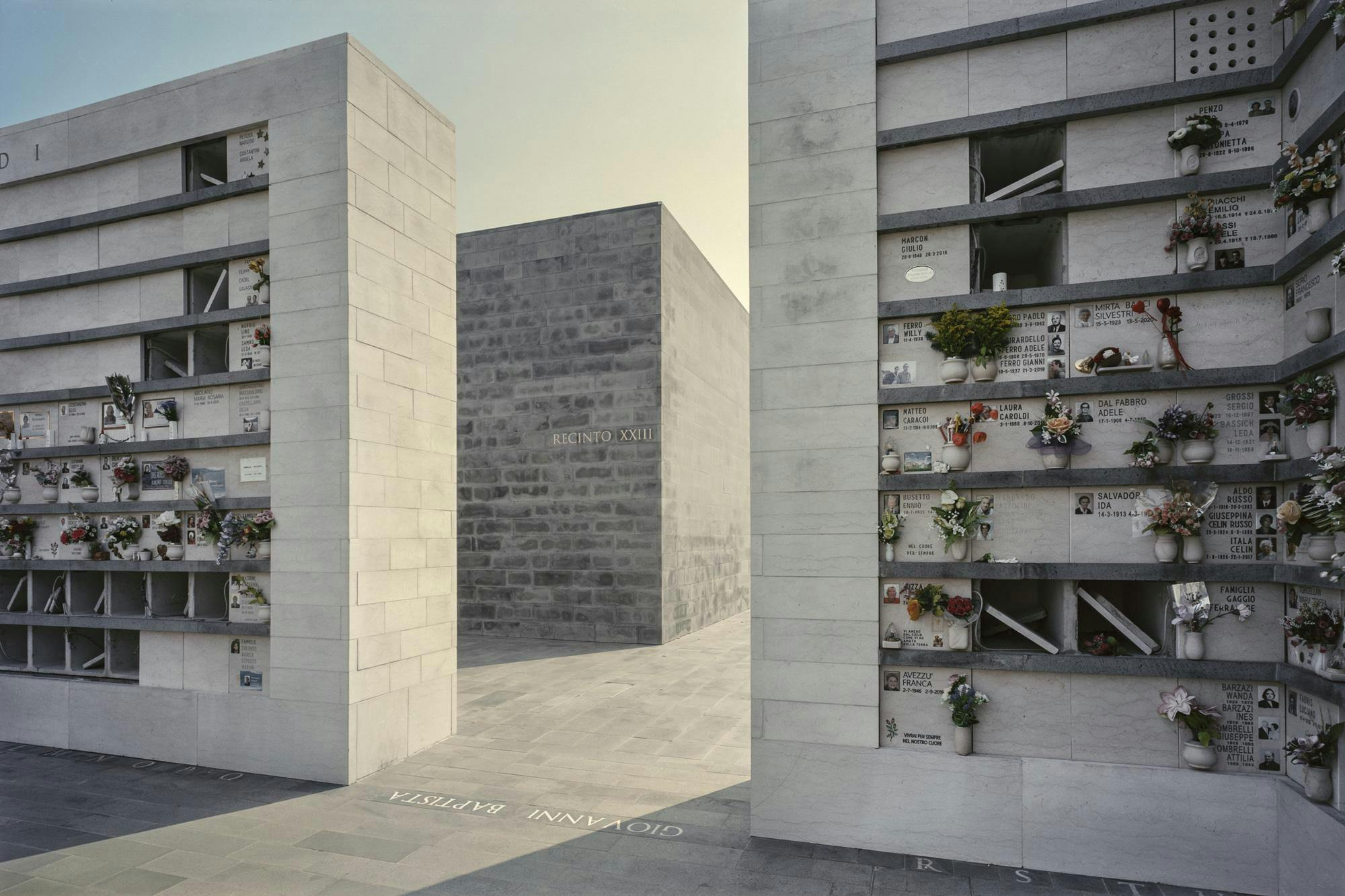
The original San Michele Cemetery dates to the early 19th century, when Napoleon banned burials within Venice and designated the island as the city's official necropolis. Chipperfield’s intervention adds a new columbarium wing to the northeast edge of the site—technically infrastructural, but highly composed. The layout recalls monastic typologies: a low-walled cloister organized around a central courtyard, with narrow corridors and open-air niches for urns. The structure is built almost entirely in handmade brick and in-situ concrete, with subtle detailing in steel and timber where required.
Nothing in the design asks for attention. The brickwork is left raw, the concrete unpolished. Visual hierarchy is minimized; each niche is identical in scale and detail, and each corridor is treated as a continuation rather than a destination. The building doesn’t announce itself as architecture—it becomes part of the cemetery’s circulation, deferring instead to the presence of weather, ritual, and time. Even the lighting is ambient and indirect, shaped more by absence than intervention.
There are moments of precision for those who pay attention: the exact proportions of the openings, the rhythm of the lintels, the slight variation in ceiling heights to mark transitions. The project doesn’t try to be symbolic or monumental—it operates through presence rather than representation. In the context of Venice, where most architecture exists as image, Chipperfield’s extension offers a counterpoint: a structure designed not to be seen, but to be used.
